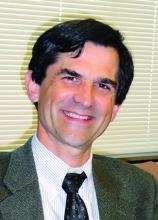Authors’ take
“Future research is needed to determine whether fewer contacts per patient resulted in clinically meaningful differences in outcomes across disease processes,” wrote Dr. Johansen, who is a family medicine doctor affiliated with OhioHealth Family Medicine Grant in Columbus and with the Heritage College of Osteopathic Medicine at Ohio University, Dublin, and Dr. Niforatos, who is affiliated with the department of emergency medicine at Johns Hopkins University, Baltimore.
The study’s limitations included reliance on self-reported categorization of PCP versus specialty care physician contact, insufficient accounting for nurse practitioner and physician assistant contact, and improved contact reporting having started in 2013, they said.
How to grow patient contact
For those PCPs looking to grow their visits and patient contact, Dr. Golden suggested they strengthen their medical home model in their practice.
“Medical home models help and transform practice operations. The Arkansas model is a multipayer model – private, Medicaid and CPC+ (Medicare),” said Dr. Golden, who also serves on the editorial advisory board of Internal Medicine News. It includes community-based doctors, not Federally Qualified Health Centers, and “requires 24/7 live voice access that promotes regular contact with patients and can reduce dependency on ER and urgent care center visits.”
“Greater use of patient portals and email communications facilitate access and patient engagement with their PCP,” Dr. Golden explained.
“Over the last 6 years, the Arkansas [patient-centered medical home] initiatives have altered culture and made our practice sites stronger to withstand COVID and other challenges. As our sites became more patient centered and incorporated behavioral health options, patients perceived greater value in the functionality of primary care” he said.
Dr. Barrett proposed PCPs participate in team-based care “for professional sustainability and also for patients to continue to experience high-quality, person-centered care.” She added that “telemedicine can also help practices maintain and increase patients, as it can lessen burden on patients and clinicians – if it is done right.”
“More flexible clinic hours is also key – after usual business hours and on weekends – but I would recommend in lieu of usual weekday hours and for those who can make it work with their family and other duties,” Dr. Barrett said. “Evening or Saturday morning clinic isn’t an option for everyone, but it is an option for many some of the time, and it would be great for access to care if it were available in more locations.”
Pandemic effect
The data examined by Dr. Johansen and Dr. Niforatos predates the pandemic, but PCPs interviewed by this news organization have seen declining patient contact occur in 2020 as well.
In fact, a survey of 1,485 mostly physician primary care practitioners that began after the pandemic onset found that 43% of participants have fewer in-person visits, motivated largely by patient preferences (66%) and safety concerns (74%). This ongoing survey, which was conducted by the Larry Green Center in partnership with the Primary Care Collaborative, also indicated that, while 25% of participants saw a total increase in patient volume, more than half of primary care practitioners reported that chronic and wellness visits are down, 53% and 55%, respectively.
“Sometimes we have to go looking for our patients when we have not seen them in a while,” Dr. Stewart noted. “We saw that with COVID because people were fearful of coming into our offices, and we had to have some outreach.”
The study authors had no conflicts of interest. Dr. Barrett, Dr. Betton, Dr. Golden, Dr. Nelson, and Dr. Stewart had no relevant disclosures.
Jake Remaly contributed to this article.


